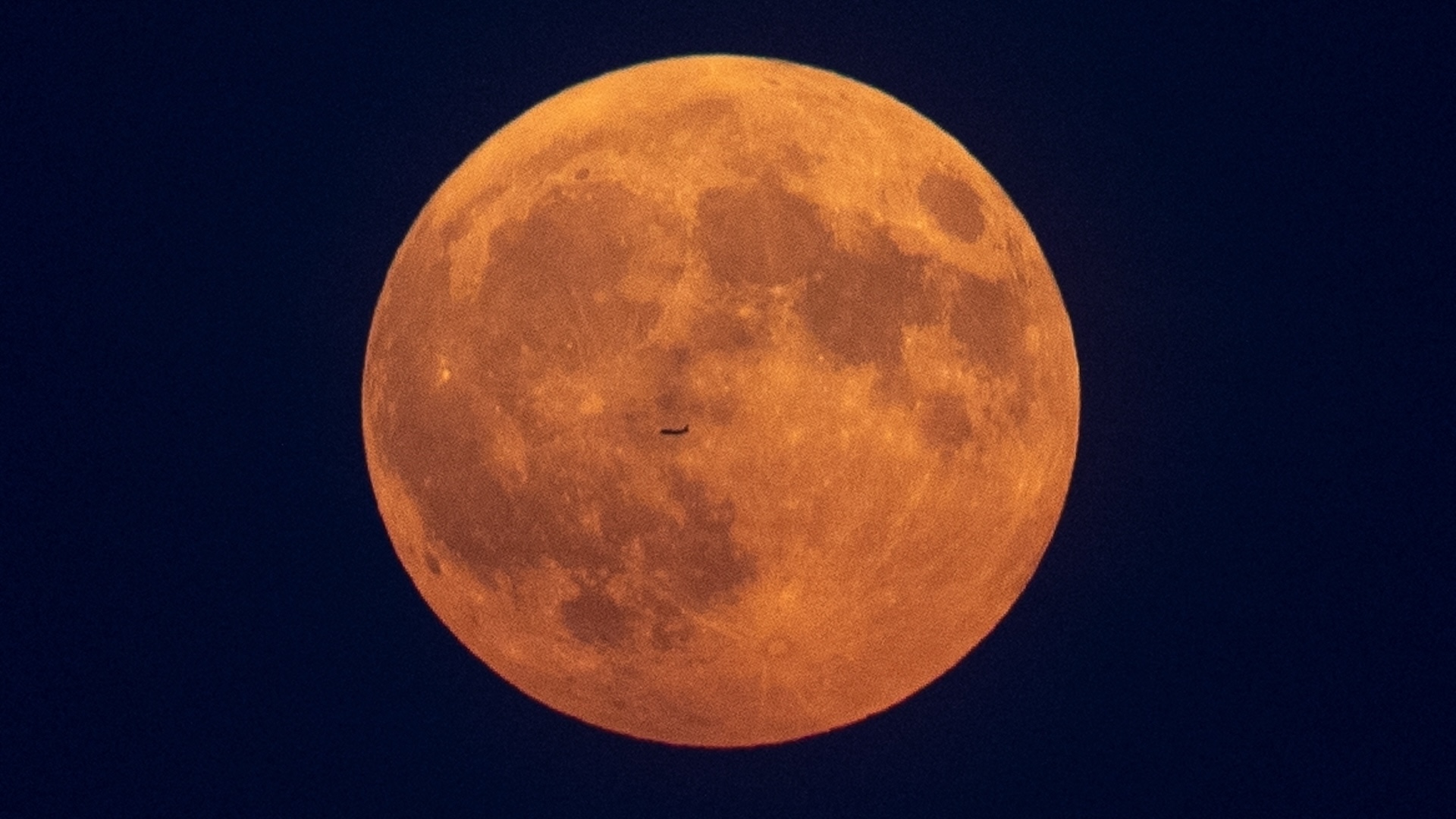The biggest supermoon of the year is about to rise: When to see the 'Hunter's Moon' at its best and brightest
The Hunter's Moon will be the first full moon of autumn when it rises on Oct. 17. It will also be the third and closest supermoon of the year.

October's Hunter's Moon, the third supermoon of 2024, will rise later this week at dusk and set at dawn. As it does, it will be about 222,056 miles (357,364 kilometers) from Earth — the closest of any full moon this year, according to AstroPixels.
That makes this year's Hunter's Moon a perigean full moon, more popularly called a supermoon. According to the Adler Planetarium, a supermoon appears about 30% brighter and nearly 15% bigger than a full moon at its farthest point from Earth.
Officially full at 7:26 a.m. EDT on Thursday, Oct. 17, the full moon will be best seen rising in the east at moonrise where you are. It will be in the constellation Pisces, and it will appear bright and full the day before and after as well.
As the moon rises, it will be about halfway between Saturn (to the moon's upper right) and Jupiter (to its lower left, rising about an hour after the full moon). Three nights later, on Sunday, Oct. 20, the moon will rise with Jupiter.
The most popular name for October's full moon is the Hunter's Moon because its appearance was once a signal for hunters to prepare for the upcoming winter, according to Almanac.com. That name has Anglo-Saxon origins, according to Timeanddate.com, though it's also been called the Falling Leaves Moon and the Blood Moon. (The latter name should not be confused with a total lunar eclipse, which is often given the same name due to the moon's reddish hue when obscured by Earth's shadow.)
The Hunter's Moon will also be the first full moon of autumn this year; the fall equinox occurred on Sunday, Sept. 22, shortly after the Harvest Moon rose on Sept. 17.
The next full moon will happen on Nov. 15. Known as the Beaver Moon, the Frost Moon and the Freezing Moon, it will be the final supermoon of 2024.
Sign up for the Live Science daily newsletter now
Get the world’s most fascinating discoveries delivered straight to your inbox.

Jamie Carter is a freelance journalist and regular Live Science contributor based in Cardiff, U.K. He is the author of A Stargazing Program For Beginners and lectures on astronomy and the natural world. Jamie regularly writes for Space.com, TechRadar.com, Forbes Science, BBC Wildlife magazine and Scientific American, and many others. He edits WhenIsTheNextEclipse.com.









